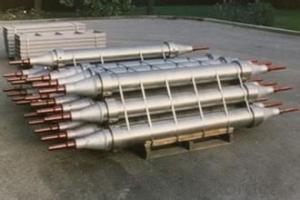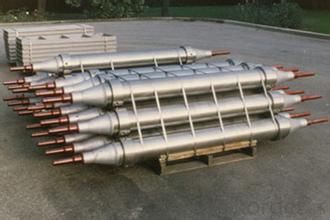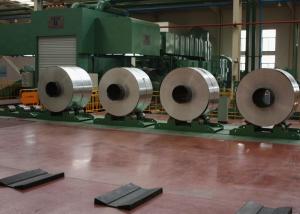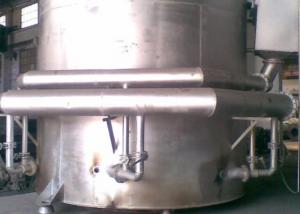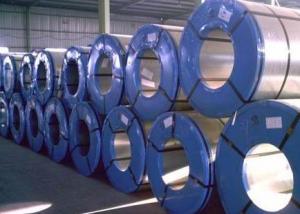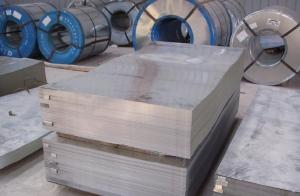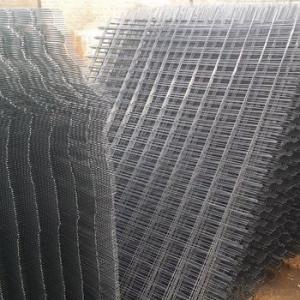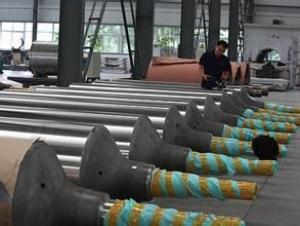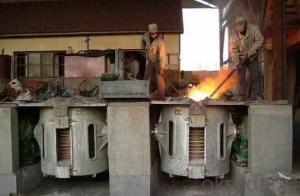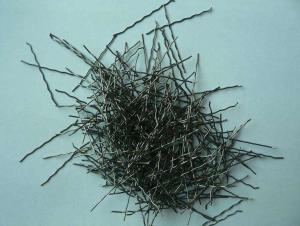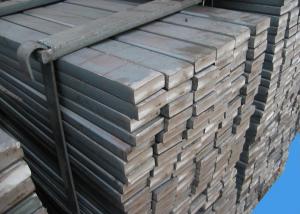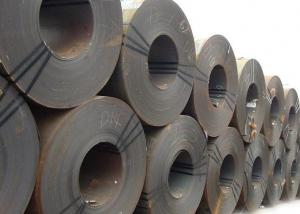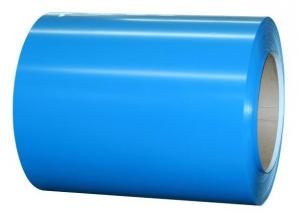Bidragon Less Auxiliaries reheat furnace for rolling mill
- Loading Port:
- Tianjin
- Payment Terms:
- TT OR LC
- Min Order Qty:
- 1000 PCS
- Supply Capability:
- 10000 PCS/month
OKorder Service Pledge
OKorder Financial Service
You Might Also Like
Quick Details
| Condition: | New | Type: | Usage: | Heat Treatment Furnace | |
| Place of Origin: | Brand Name: | Bidragon | Model Number: | BD annealing furnace | |
| Voltage: | 380V | Power(W): | 167KW | Dimension(L*W*H): | customized |
| Weight: | 860KG | Certification: | ISO | Warranty: | one year |
| After-sales Service Provided: | Engineers available to service machinery overseas | Power: | 20kw-300kw | tell: | 0086-372-2190222 |
| email: | sales2015 at biboiler dot com | Furnace Specification: | d 0.1 to 3.0mm width 150 1500mm | model: | BD annealing furnace |
| annealling furnace: | high vacuum | Max. Temperature: | 1100°C | Working Temperature: | 1050°C (for 304 Stainless steel) |
| skype: | bidragon2015 | Product name: | bidragon less auxiliaries reheat furnace for rolling mill |
Packaging & Delivery
| Packaging Detail: | plywood or nude package |
| Delivery Detail: | 7 days after payment |
Specifications
bidragon less auxiliaries reheat furnace for rolling mill
1.vacuum annealing furnace.
2.high vacuum.
3.high temperature
bidragon less auxiliaries reheat furnace for rolling mill
Product Description
1. Application of reheat furnace
It is applicable for the continuous anneal of different material, such as the copper straight pipe/stick, aluminum tube, steel tube, plates parks, etc.
2. Consist parts of reheat furnace
This equipment is mainly composed of the following parts:
transmission system
heating system
cooling system
control system
ammonia decomposition gas supply system
3. Main features:
Continuous heating: doing preheating, heating, temperature-saving, cooling for product continuously, without any limit of the product length.
Stable and reliable: the annealing furnace adopts roller type transmission with frequency control of motor speed, stable and reliable.
Uniform temperature: the hot atmosphere circulation ensures temperature uniform, which makes product very bright.
Unique design: unique design of the cooling zone ensures product cooling homogeneity. The furnace body adopts steel frame structure.
High efficiency: after annealing process, the product furnace will be very light and bright.
Automatic sealing: connection between furnace door and furnace body is automatic sealing, which ensures the machine working safely with high efficiency.
Interlock protection device: the electric fueled annealing furnace equipped with interlock protection device, it can prevent mistake due to wrong operating. Safety and reliable.
Intelligent PID automatic control: the electric annealing furnace adopts intelligent PID data display to control furnace temperature, ensuring the temperature uniform and saving 30% energy.
- Q: What are the different types of steel products used in the manufacturing of musical instruments?
- There are various types of steel products used in the manufacturing of musical instruments, including stainless steel for strings, steel alloys for instrument bodies, and steel springs for mechanical components such as keys and pedals.
- Q: What are the different types of steel brackets and their uses?
- There are several types of steel brackets, including L-shaped brackets, corner brackets, angle brackets, and T-shaped brackets. L-shaped brackets are commonly used for structural support and reinforcement in construction projects. Corner brackets are used to connect two pieces of wood or metal at right angles. Angle brackets are similar to corner brackets but are adjustable and can be used to join materials at various angles. T-shaped brackets are often used for shelving and support systems. Overall, steel brackets provide stability and strength in a wide range of applications.
- Q: How do steel products contribute to the telecommunications and networking industry?
- Steel products contribute to the telecommunications and networking industry by providing essential infrastructure and support. Steel is used in the construction of telecommunication towers, which are crucial for transmitting signals and ensuring reliable network coverage. Additionally, steel is used in the manufacturing of cable trays, cabinets, and enclosures that protect and organize the network equipment. Its durability and high strength properties make steel products reliable, ensuring the stability and longevity of telecommunication networks.
- Q: How is steel used in the manufacturing of electrical equipment?
- Steel is commonly used in the manufacturing of electrical equipment because of its strength, durability, and magnetic properties. It is often used to construct the frames, casings, and support structures of electrical equipment, providing a sturdy and protective enclosure. Additionally, steel is used in the production of magnetic cores for transformers, motors, and generators, as it helps to enhance the efficiency and performance of these devices.
- Q: How is steel used in the manufacturing of transportation equipment?
- Steel is widely used in the manufacturing of transportation equipment due to its strong and durable nature. It is utilized in the construction of car bodies, truck frames, and railway tracks, providing the necessary strength and stability required for safe and efficient transportation. Additionally, steel is used in the production of aircraft, ships, and even bicycles, as it offers excellent resistance to corrosion and can withstand extreme conditions.
- Q: What are the environmental impacts of steel production and the use of steel products?
- The environmental impacts of steel production and the use of steel products are significant. Steel production is a highly energy-intensive process, leading to high levels of greenhouse gas emissions, particularly carbon dioxide. The extraction of raw materials, such as iron ore and coal, for steel production also contributes to deforestation, habitat destruction, and air and water pollution. Additionally, steel production generates large amounts of solid waste and toxic byproducts, which can contaminate soil and water sources. Furthermore, the use of steel products, while durable and recyclable, can contribute to resource depletion and waste accumulation if not properly managed. Overall, the steel industry's environmental impacts necessitate the adoption of sustainable practices and technologies to minimize pollution, reduce energy consumption, and promote circular economy principles.
- Q: What are the different types of steel products used in the manufacturing of kitchen appliances?
- There are various types of steel products used in the manufacturing of kitchen appliances, including stainless steel, carbon steel, and galvanized steel. Stainless steel is the most common choice due to its durability, resistance to corrosion, and aesthetic appeal. Carbon steel is often used for cookware due to its excellent heat distribution and retention properties. Galvanized steel, on the other hand, is primarily used for the external components of kitchen appliances, providing strength and protection against rust.
- Q: How are steel sheets used in the manufacturing of industrial machinery?
- Steel sheets are commonly used in the manufacturing of industrial machinery as they provide strength, durability, and versatility. These sheets are used for constructing machine frames, enclosures, and supports, as well as for creating various components such as gears, shafts, and brackets. The ability to mold and shape steel sheets allows manufacturers to customize machinery according to specific requirements, ensuring optimal performance and reliability.
- Q: What are the different types of steel angles and their applications in the manufacturing of machinery?
- There are several types of steel angles commonly used in the manufacturing of machinery. These include equal angles, unequal angles, and L-shaped angles. Equal angles have equal sides and are typically used for structural applications, such as frames and supports. They provide stability and strength to the machinery. Unequal angles have different sides and are used for specific purposes where additional strength or load-bearing capacity is required. These angles are commonly used in the construction of machinery components that need to withstand heavy loads or stress. L-shaped angles, also known as corner angles, are commonly used in machinery manufacturing to provide structural support and reinforcement. They can be used to reinforce corners, provide additional strength to joints, or create bracing for machinery components. Overall, the different types of steel angles play a crucial role in the manufacturing of machinery by providing structural support, stability, and reinforcement to ensure the durability and functionality of the machinery.
- Q: What are the different types of steel coatings?
- There are several types of steel coatings available, including galvanized, aluminized, zinc-nickel, epoxy, polyurethane, and polyvinylidene fluoride (PVDF) coatings. Each type offers unique properties and benefits, such as enhanced corrosion resistance, improved durability, and increased aesthetic appeal. The choice of coating depends on the specific application and desired outcome.
Send your message to us
Bidragon Less Auxiliaries reheat furnace for rolling mill
- Loading Port:
- Tianjin
- Payment Terms:
- TT OR LC
- Min Order Qty:
- 1000 PCS
- Supply Capability:
- 10000 PCS/month
OKorder Service Pledge
OKorder Financial Service
Similar products
Hot products
Hot Searches
Related keywords
